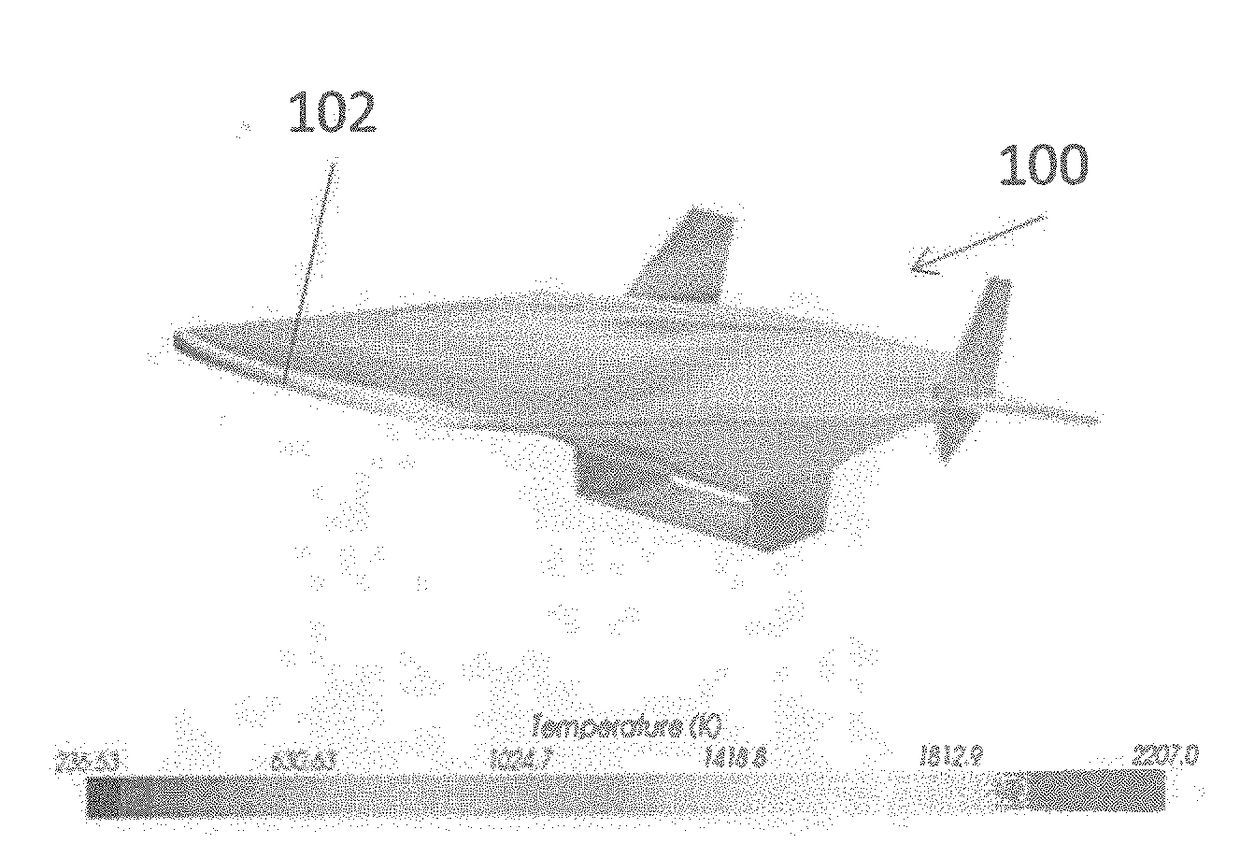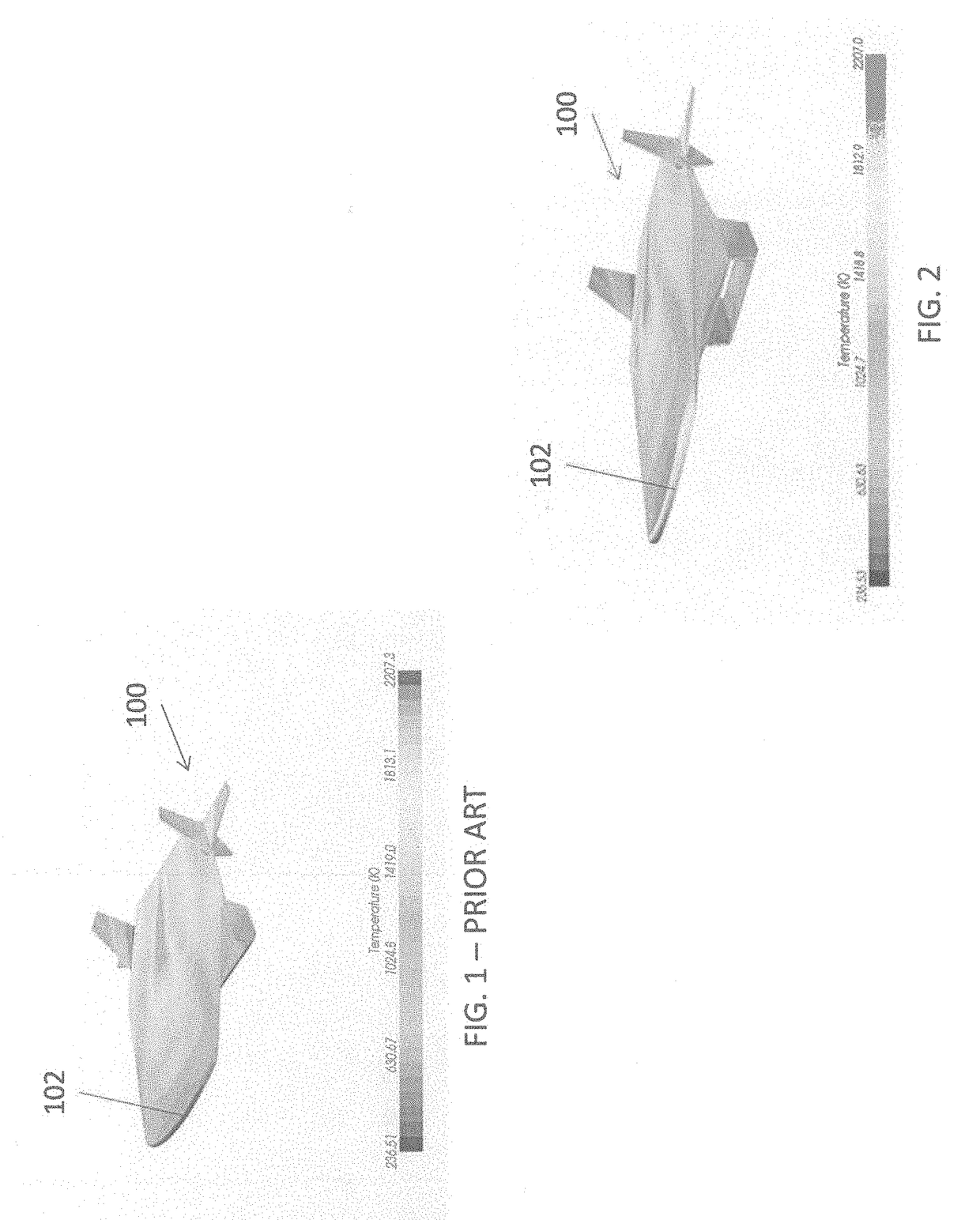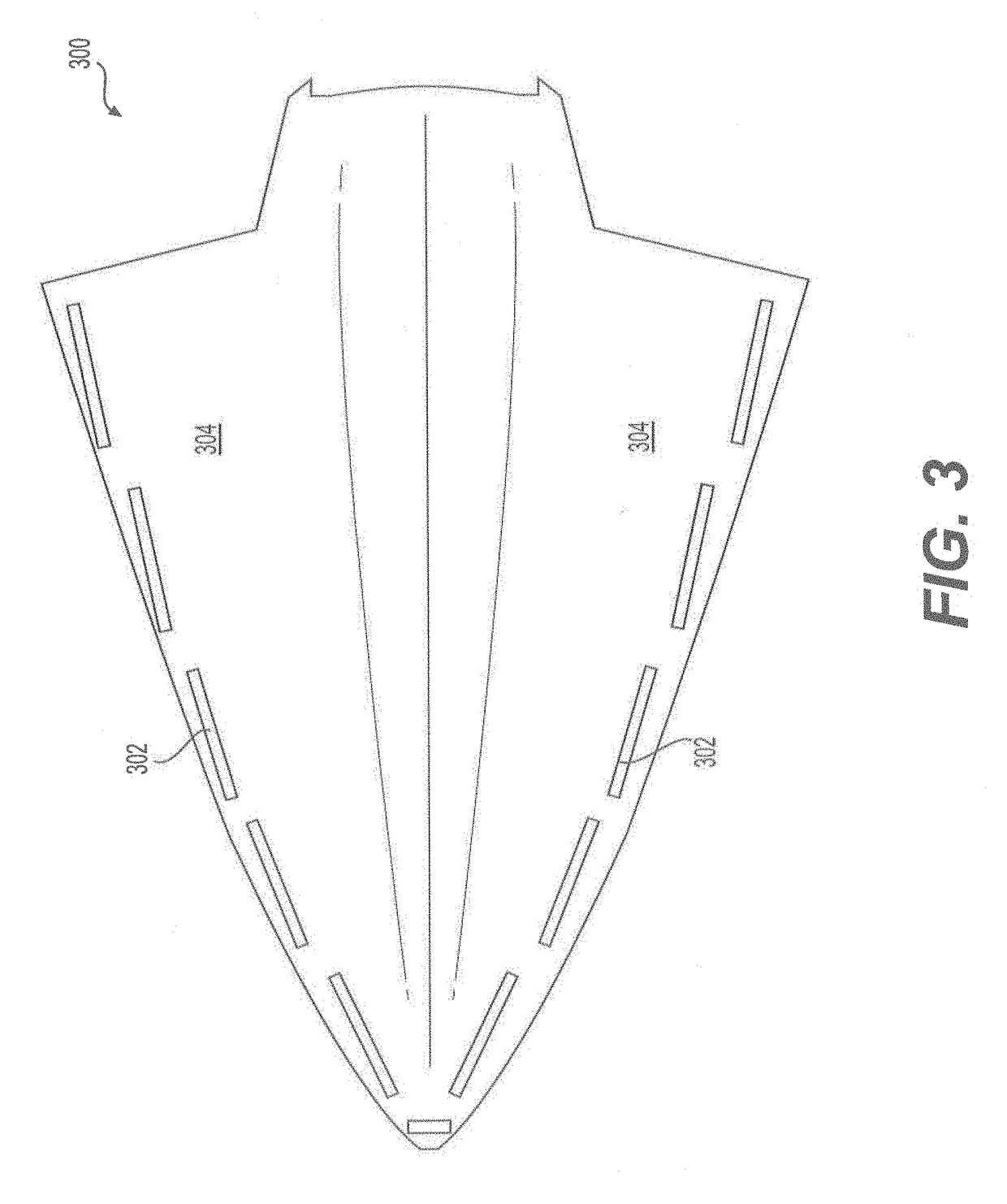Cooling of aerospace flight systems
a cooling system and aerospace technology, applied in the field of high efficiency cooling system, can solve the problems of high-performance equipment, supersonic or hypersonic aircraft, reusable spacecraft, etc., and achieve the effect of reducing the tendency of being detected and reducing the output of thermal signatures
- Summary
- Abstract
- Description
- Claims
- Application Information
AI Technical Summary
Benefits of technology
Problems solved by technology
Method used
Image
Examples
Embodiment Construction
[0025]The present invention provides systems and methods for improving the cooling of an advanced aerospace vehicle that operates at high speeds and with high surface temperatures. Aspects of the present invention are depicted with respect to FIGS. 1-11.
[0026]Referring initially to FIG. 1, an aerospace vehicle 100, in accordance with the prior art, is depicted in perspective view. The vehicle 100 represents a class of high speed aircraft operating at high altitudes and subject to high temperatures due to the friction of air passing over the various surfaces of the vehicle. These high aerodynamic heating rates typically occur on critical flight surfaces such as the nose, wing leading edge, leading edges of the tail or elevator, and proximate engine inlets and nozzles. Representative aerospace vehicles include, but are not limited to, hypersonic aircraft. For the vehicle 100 depicted in FIG. 1, traveling at an altitude of 100,000 feet (approximately 19 miles) and a speed of Mach 7, th...
PUM
 Login to View More
Login to View More Abstract
Description
Claims
Application Information
 Login to View More
Login to View More - R&D
- Intellectual Property
- Life Sciences
- Materials
- Tech Scout
- Unparalleled Data Quality
- Higher Quality Content
- 60% Fewer Hallucinations
Browse by: Latest US Patents, China's latest patents, Technical Efficacy Thesaurus, Application Domain, Technology Topic, Popular Technical Reports.
© 2025 PatSnap. All rights reserved.Legal|Privacy policy|Modern Slavery Act Transparency Statement|Sitemap|About US| Contact US: help@patsnap.com



